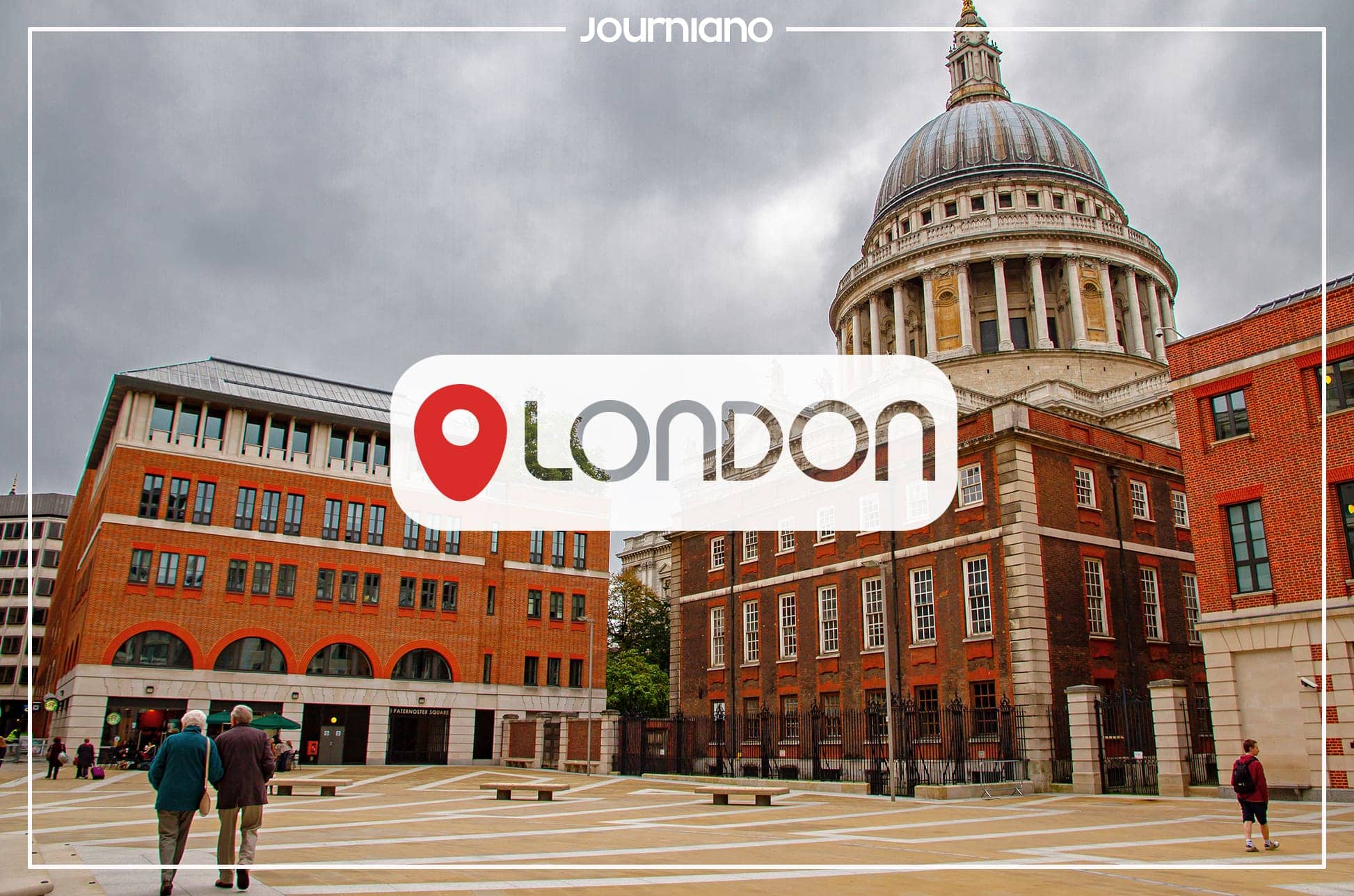
Do you remember the last time you got to know about an overwhelming place, either in your hometown or a city you just visited, which you simply overlooked or haven’t heard and read about in any blog or guide?
Well, I guess this happens every now and then. We tend to overlook alleys or backyards we pass by for instance. We often admire a spot just from one angle, although the other angles would enable you a more authentic and unique experience.
These overlooked and underrated places are everywhere – in your neighbourhood, your hometown or any spot you may visit.
They even exist in London – quite a bunch of them to be honest.
Quick Links
- Overlooked and underrated place in London
- On the way to St. Paul’s Cathedral
- Paternoster Square – Prime example for new developed squares
- New meets old architecture in London
- Paternoster Square’s tragic and historic background
- Paternoster vents
- Enjoy St. Paul’s Cathedral via London’s last remaining city gate
- How to reach Paternoster Square
- Closing words
Overlooked and underrated place in London
Most of the times, you don’t have to go to far-distanced neighbourhoods. In fact, you find them just around the corner of some famous landmarks or popular areas. This time, the overlooked and underrated place in London is located exactly behind one of London’s most beloved landmarks – St. Paul’s Cathedral.
Here we go, to one of London’s overlooked and underrated places – Paternoster Square.
On the way to St. Paul’s Cathedral
So, as already mentioned, Paternoster Square is located right behind St. Paul’s Cathedral. Thus, it will make as a great foreplay before the climax.
Take the subway to St. Paul’s station and navigate yourself to Paternoster Row. This lovely alley will lead you to the square, as you might see a column at its end.
As soon as you have the first possibility to turn left, turn left and admire St. Paul’s framed by the brick facades surrounded by Canon Alley. This is by far one of the underrated photo motifs of London and view of St. Paul’s. The contrast between the orange bricks and the cathedral’s majestic cupola is simply marvellous and shouldn’t be left out in your gallery.
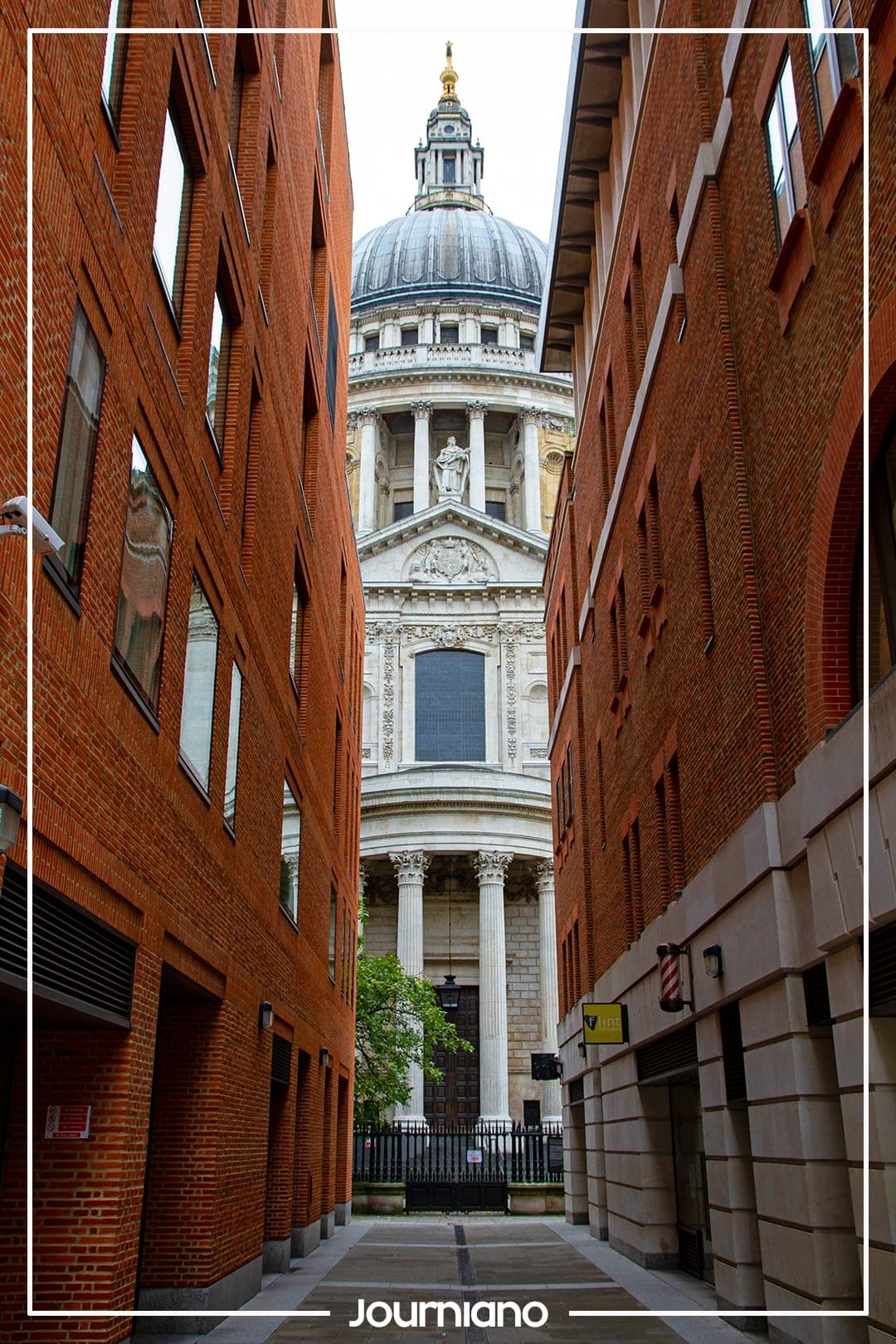
Paternoster Square – Prime example for new developed squares
When you proceed towards the square, you have the choice to proceed via alley or passing through the arcades of the new developed part of Paternoster Square’s surrounding buildings.
I advise you to walk through the arcades and admire their unique ceiling design. Replacing a classic arched ceiling with a flat one but adding curved elements to it, is a refreshing change and looks great.
The ground level is stuffed with stores, bars, cafés which creates a certain urban and vivid vibe.
As soon as you leave the arcades and proceed towards the column, you get a real sense of the square’s structure.

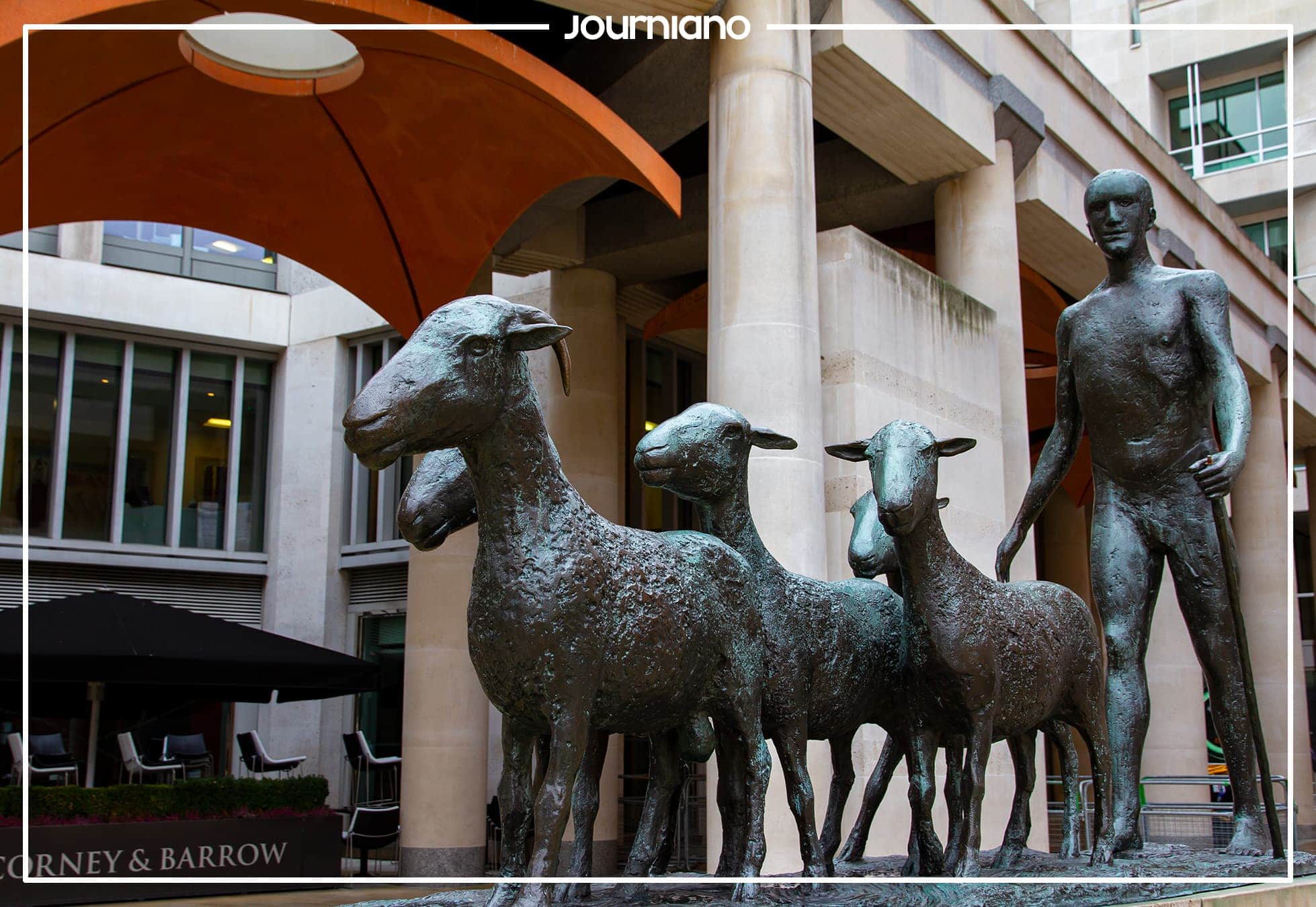
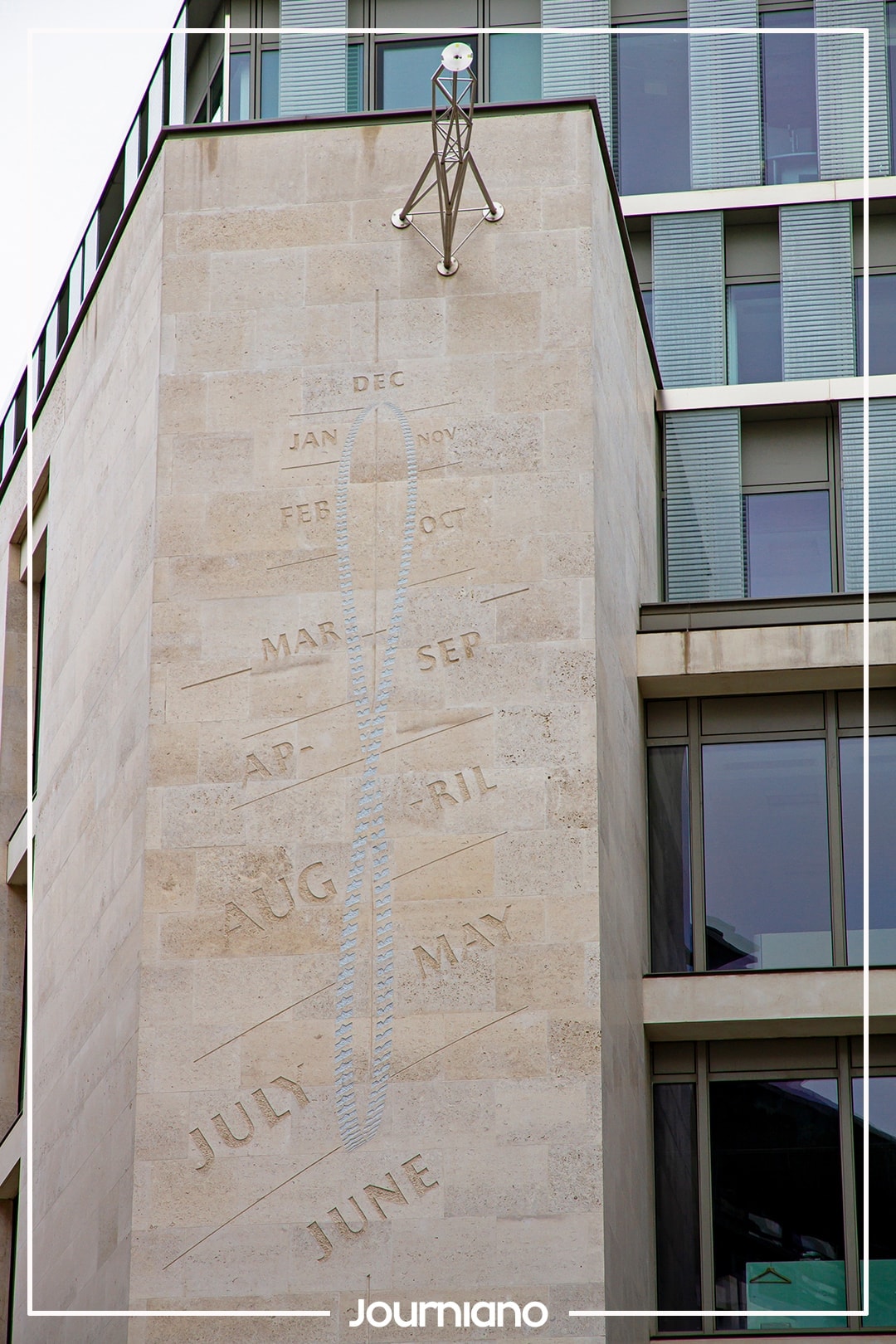

New meets old architecture in London
Paternoster Square is spacey and not densely designed. To be clear, every building and monument surrounding the square harmonise perfectly with each other – although belonging to different ages.
While the part with the arcades was finished in the 21st century, there is also an existing part of the first redevelopment project of that place. The already mentioned Canon Alley lies in between two brick buildings from the 20th century.
Furthermore, St. Paul’s Cathedral, the landmark itself from 1708 which watches the whole square, creates a significant contrast to its neighbours. Nevertheless, they form a great collective.


Paternoster Square’s tragic and historic background
Somehow, it’s bizarre that this place got redeveloped twice within 40 years. To understand the motives behind it, you must admire the square’s 23-meter-high column – especially its top
At first glance, it might look like a golden pineapple. However, when looking closer, you identify a gold leaf covered flaming urn. This urn symbolizes and commemorates the two biggest fires in London.
What London’s biggest fires have to do with Paternoster Column
The first fire, also called “Great Fire of London”, occurred in 1666 while the second fire resulted from “The Blitz”, a severe bombing attack during the Second World War in 1940 and 1941. These two fires destroyed a lot in London. However, “The Blitz” was responsible for the first redevelopment project of the Paternoster Square area, as it was totally destroyed.
Paternoster Square’s redevelopment phases after the Second World War
Thus, the City of London started its first attempt to rebuild the area in the 1960s. Unfortunately, the result and appealing was underwhelming. This resulted into a new redevelopment phase in the 90s. Under the plans of British architect and city planner Sir William Whitfield, the new square and its surrounding buildings got finished in 2003.
Today, the square is packed with gastronomy and a vivid place – during daytime though. Unfortunately, this is due to the fact that the redevelopment lacks any sort of living spaces. Furthermore, high renting costs seem to attract nearly solely the big chains from the gastronomy world.
Nevertheless, the redesign of Paternoster Square is still a success and has further highlights in store.

Paternoster vents
Another highlight at Paternoster Square is a sculpture pair called Paternoster Vents. By taking Paternoster Ln towards west, you encounter metallic-looking twisted wings. The stainless-steel sculpture was designed by British designer Thomas Heatherwick, who is also responsible for the super famous Vessel structure in New York City.
Moreover, Paternoster Vents are, similar to Paternoster Column, also used as a cooling system for providing ventilation to an underground electrical substation. In addition to that, the vents’ dynamic form enables an interesting background for photo shootings.
If you are interested into further details about the creation of the sculpture, you find them here.


Enjoy St. Paul’s Cathedral via London’s last remaining city gate
The last highlight before approaching St. Paul’s Cathedral is London’s last remaining city gate from the middle ages – Temple Bar. While its original location wasn’t at Paternoster Square, it has been carefully reconstructed to the public between the square and the cathedral.
In 1878 Temple Bar was dismantled at its original position piece by piece due to road expansion. After standing at Theobalds Park for around 120 years, the monument moved to its recent place at Paternoster Square in 2003.
Passing the gate means leaving Paternoster Square’s redevelopment project and approaching one of London’s iconic landmarks.

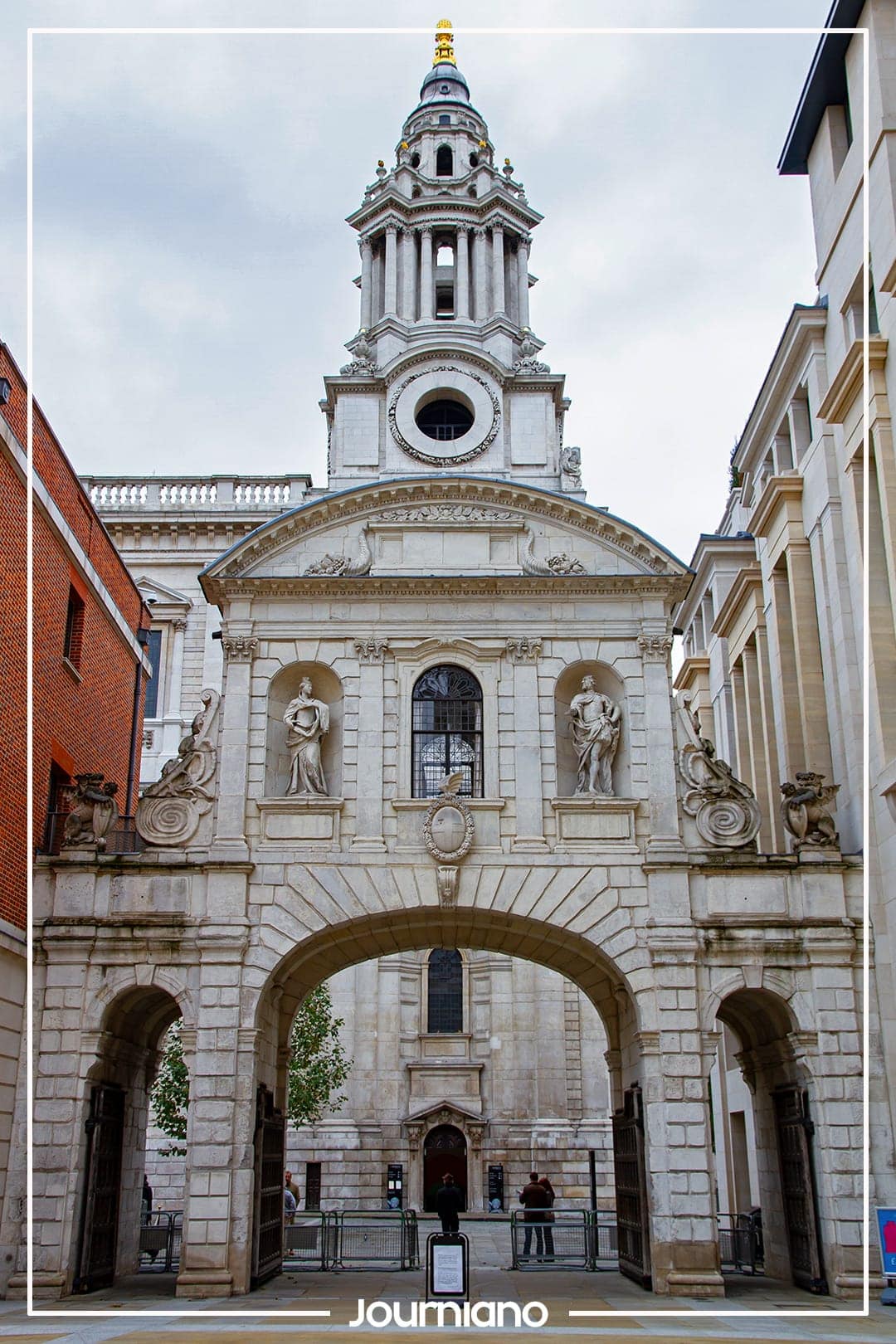
How to reach Paternoster Square
You
can easily reach Paternoster Square by taking either the Central Line until St.
Paul’s Station or several bus lines to St. Paul’s Stop (SQ or SJ).
For further navigation check the map below.
Closing words
Finally, after having seen many new square/public space redevelopments in recent years, I can totally confirm that Paternoster Square belongs to the greater results among them.
The variation of architectural eras being present at that place, mixed with the square’s great spacey structure, resulted into a spot where you’d literally love to spend your time. Those lovely orange details, like the arcades’ ceiling elements as well as some panels at few buildings’ facades, interact perfectly with the older orange brick houses from the sixties.
Furthermore, the existing monuments, which stand for history, memorials and art, make Paternoster Square to one of London’s deepest, interesting and versatile places to experience.
All in all, London’s overlooked and underrated place, Paternoster Square, is a massive foreplay before heading to St. Paul’s Cathedral for first-time visitors. In case you missed it several times, you’ll have a great time enjoying that place after all – either by night at dinner or any other daytime.


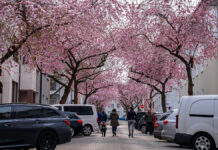






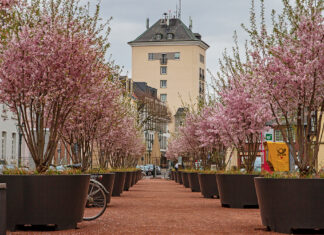
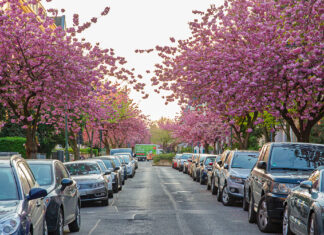

What a splendid trip report about one of my favorite cities in (Europe). I definitly have to visit this wonderful city again as soon as possible and these beautiful pictures reminded me to book a flight to London for spring 2020.
Cheers Martin,
Thank you so much for your kind words. I’m greatful that you enjoyed my report about one of your favorite cities.
Hopefully, I inspired one of your upcoming journeys – let it be London, mate. 😉
Dear Journianho,
Finally I’ve got to read this article after I planned to read it several times. As my last visit dates back to my early days I can’t remember much. So for my next visit I take every advise to see in London.
This is definitely one of your best articles so far. The historical background and architectural remarks really make this worth to read.
So with your shared experience I’m happy to see it by myself the next time I visit London.
Keep the good work going!
Cheers,
Phil
Cheers Philip,
Finally I’ve got to respond to your great comment, which I really appreciate.
I’m very glad to read that I could expand your knowledge about places and history
in London a little bit. Should you ever visit Paternoster Square, I’d be super
excited about a post from there, where you could tag me.
Thank you very much for calling this the best article, you’ve read on my website so far.
I’ll do my best to deliver even better articles, dear Phil.
Cheers,
Fabiano